Results 11,651 to 11,660 of 12094
Thread: Anandtech News
-
03-10-23, 05:24 PM #11651
Anandtech: Supermicro SYS-E302-12E Fanless Industrial PC Review: Elkhart Lake for IoT
Passively-cooled systems find application in a wide variety of industrial use-cases including automation, IoT gateways, medical systems, surveillance, and digital signage. In addition to avoiding moving parts, systems meant for industrial use need to be built to operate 24x7 in challenging environmental conditions.
Supermicro has systems targeting this market under the Embedded / IoT category in a variety of form-factors. Scenarios with minimal I/O requirements can use the compact chassis with support for 3.5" SBCs. The company also provides passively-cooled chassis configurations for industrial mini-ITX boards.
The Supermicro SYS-E302-12E based on the Intel Atom x6425E embedded SoC is the company's highest performing system in the Elkhart Lake lineup. It is optimized for industrial automation, digital signage / data visualization, and IoT applications. Read on for a detailed look at the features and performance profile of the system, along with an evaluation of the thermal solution.
More...
-
03-14-23, 12:24 AM #11652
Anandtech: G.Skill Launches DDR5-8000 CL38 48GB Memory Kit For Raptor Lake CPUs
G.Skill has announced a new, high capacity DDR5 memory kit for Intel's 13th Generation Raptor Lake processors and accompanying LGA1700 platform. The Trident Z5 RGB DDR5-8000 CL38, which features a capacity of 48 GB (2 x 24 GB), comes with an Intel XMP 3.0 profile for a fast and effortless setup on high-end systems that can accomodate the high-speed hardware
With the release of 24Gbit DDR5 memory chips, memory manufacturers are working to fill in the gap between current 16GB and 32GB UDIMMs. As these new, higher capacity dies allow for larger single-rank DIMMs, this is allowing DIMM vendors such as G.Skill to launch higher capacity versions of their fastest DIMMs.
The memory timings on the Trident Z5 RGB DDR5-8000 aren't great, but they're decent enough. G.Skill binned the memory for CL 38-48-48-127 and 1.45 volts on the DRAM side. The specifications are almost identical to the Trident Z5 RGB 32 GB (2 x 16 GB) memory kits that G.Skill announced a few months back. The principal difference is that the vendor has bumped the memory kit capacity from 32 GB to 48 GB. Unfortunately, G.Skill didn't reveal which DRAM vendor's chips they're utilizing in the Trident Z5 RGB DDR5-8000 memory kit. Considering the data rate, it's plausibly using SK hynix's latest A-die ICs, as many vendors are utilizing those for premium memory kits DDR5-7000 speeds.
Meanwhile, it's worth noting that although the Trident Z5 RGB DDR5-8000 has XMP 3.0 support, the memory kit won't quite be plug-and-play on many LGA1700 motherboards. Consumers need to own a processor with a very strong IMC that can tolerate high-speed memory (i.e. top-tier Raptor Lake chips). An equally capable motherboard is required as well. Even then, judging from G.Skill's validation list, it sounds like 1 DPC motherboards are going to be the prime choice. G.Skill has only validated the memory kit on Asus' ROG Maximus Z790 Apex and EVGA's Z790 Dark K|NGP|N, two over-engineered motherboards tailored to extreme overclocking. Interestingly, Gigabyte's Z790 Aorus Tachyon isn't on the list, nor is MSI's MEG Z690 Unify-X.G.SKill Trident Z5 Series DDR5 UDIMM Memory Specifications Frequency Latency Timings Voltage Capacities DDR5-8000 38-48-48-127 1.45v 48 GB (2 x 24 GB)
32 GB (2 x 16 GB)
G.Skill's Trident Z5 RGB DDR5-8000 memory kit is scheduled to hit retail shelves globally in April of this year, going up against as-of-yet released kits from TeamGroup, V-Color, Galax, and Netac. In the meantime, the company is keeping a tight lip on the pricing, preferring to keep the shock factor under wraps for now. Suffice it to say, given the binning required to produce this speed grade of RAM, and the premium pricing of DDR5 overall, we don't expect that the Trident Z5 DDR5-8000 kits will come cheap.
More...
-
03-14-23, 12:24 AM #11653
Anandtech: Dropbox Shares Preparations for HAMR Hard Drives, Focusing On Reducing Dri
Dropbox was among the first large cloud service providers (CSPs) providers to deploy hard drives that use shingled magnetic recording (SMR) to increase storage density of its datacenters. As the company is looking forward to future technology and plans to be one of the first adopters of HDDs featuring heat assisted magnetic recording (HAMR), it is already planning for how HAMR drives will affect its datacenters and how it should prepare for their deployment.
In a surprising candid blog post, Dropbox shared some thoughts and experiences ahead of the deployment of HDDs of based on HAMR technology, which will offer capacities starting from 30TB and spanning all the way to 100TB and higher in the future. In a bid to ensure predictable performance of these hard drives as well as to maintain its quality of service (QoS) requirements for its datacenters, the company will have to alter the designs of its servers and introduce some changes to its infrastructure.
Perhaps the most interesting takeaway is on the subject of vibration control and tolences. HAMR is meant to radically increase areal density of hard drives platters, so it is inevitable that their track density will also get higher. While higher areal density will increase sequential read/write performance of HDDs, it will also make drives more prone to head positioning errors due to high frequency vibrations common in datacenter racks, which will degrade their performance. Vibrations are caused by fans, nearby hard drives when they perform seek actions, and rotational forces of HDDs, so for CSPs like Dropbox the challenge is to minimize impact of vibrations on each drive. The company plans to address vibrations in its 7th generation servers by leveraging HDD Dynamics specifications developed by the Open Compute Project.
"Our focus in the future will be to minimize HDD performance degradation from system vibrations by suppressing structural vibration of the system chassis and reducing fan noise," wrote Eric Shobe, a hardware engineering manager at Dropbox, in a blog post. "Putting more focus into this area will be critical as we onboard next generation HDDs, and it is great to see some efforts already underway in the Open Compute Project (OCP) community. We are planning to leverage the OCP’s HDD Acoustical Surrogate — a new industry-standard specification for vibrational testing — in our 7th generation designs."
Another peculiarity of high-capacity hard drives in general is their decreasing IOPS-per-TB performance amid increasing capacity. Once random performance per terabyte of an HDD drops below certain level (some say below 5 IOPS per TB, but the actual number depends on specific performance requirements), this drive no longer meets service level agreement and therefore QoS requirements. To address these issues, CSPs have to either reduce the amount of capacity they use per drive (i.e., buy smaller drives, or pay for capacity they do not use), implement command queuing and latency-bounded I/O (LBIO) in firmware (i.e., lower performance), use SSD caching (and therefore reduce usage of HDDs), or use hard drives that offer a higher I/O performance. HDD makers, in turn, are addressing reduced IOPS-per-TB performance by producing drives with two independent actuators that essentially double IOPS-per-TB.
"We also anticipate dual-actuator drives may eventually be necessary in order to meet our IOPs/TB requirements," Shobe wrote. "Density increases can only go so far if there is still just one channel for I/O, but two channels will effectively double the IOPs our drives can sustain."
While decreasing IOPS-per-TB performance can be mitigated, I/O performance per server enclosure is another concern that CSPs like Dropbox have.
"Higher density HDDs have challenged us to rethink where other bottlenecks lay in our infrastructure," hardware engineering manager at Dropbox wrote. "For example, in order for our seventh generation server to theoretically support more than 6 PB in a single enclosure, we had to re-architect our network so we can drain and repair data at an acceptable rate."
In general, Dropbox is looking forward adopting higher-capacity HAMR HDDs in its datacenters, but to use them efficiently, it plans to deploy its 7th Generation servers that address vibration and I/O per box concerns.
More...
-
03-14-23, 04:03 PM #11654
Anandtech: ASUS Unveils TUF Gaming B760M-BTF WIFI D4 Motherboard: Reverse Mounted Con
When done correctly and with patience, cable management can be a rewarding experience; for the most part, it's frustrating, especially for premium systems. Much of the onus has been on chassis manufacturers to utilize the space offered to provide ample room for cable management. ASUS looks to go the other way and has announced a motherboard with the primary power connectors and headers on the rear, the TUF Gaming B760M-BTF WIFI D4. Like MSI's Project Zero and GIGABYTE's Project Stealth, ASUS calls its new series Back to 'the' Future, or BTF for short, to distinguish them from the rest of its alphabet spaghetti-named line-ups.
More on the value-oriented side of the fence than their more premium models, ASUS has taken one of its pre-existing motherboards (TUF Gaming B760M-PLUS WIFI) and engineered it so that the power headers and primary connectors such as SATA, fan headers, and front panel USB headers are placed on the rear. Based on the B760 chipset for Intel's 12th Gen and 11th Gen Core series processors, the ASUS TUF Gaming B760M-BTF is a micro-ATX offering and represents ASUS's TUF Gaming series. As it's representative of an entry-level model, ASUS has opted for DDR4 support, as Intel's Alder Lake (11th Gen) and Raptor Lake (12th Gen) both support DDR5 and DDR4.
Touching on the core details, the front of the ASUS TUF Gaming B760M-BTF WIFI D4 looks like any typical motherboard sans the connectors on the rear. It has a black PCB with grey highlights and packs an entry-level to mid-range feature set. ASUS includes four memory slots with support for up to DDR4-5333 with a maximum capacity of 128 GB. As a WIFI model, it comes with a WIFI 6 wireless interface, an unspecified Realtek 2.5 GbE controller, and an unspecified HD audio codec. Still, ASUS hasn't provided specifics on these as of yet. ASUS also includes two M.2 connectors on the front with heatsinks, which can support PCIe 4.0 x4 M.2 drives.
Looking at the rear of the board, this is where all of ASUS's new Back to the Future implementations come into play. All relevant connectors are in the same places as they would be on the front, but they have just been reverse-engineered to protrude out the rear of the case. This includes the 24-pin ATX motherboard, one 8-pin 12 V, and one 4-pin 12 V CPU power input, four SATA ports, front panel USB headers, and eight 4-pin fan headers. There is also a single PCIe 4.0 x4 M.2 slot on the rear, although this doesn't come with a heatsink, so if an NVMe drive is going to be used, it'll likely require a low-profile aftermarket heatsink.
ASUS does include support for USB 3.2 G2x2 on the rear panel through one port, with an additional two USB 3.2 G2 ports (1 x TypeA and C), with two USB 3.2 G1 Type-A and one USB 3.2 G1 Type-C; this means the rear panel has three USB Type-C ports. ASUS also includes four USB 2.0 ports, one DisplayPort, one HDMI output, three 3.5 mm audio outputs, and a clear CMOS button.
Gallery: ASUS Unveils TUF Gaming B760M-BTF WIFI D4 Motherboard: Reverse Mounted Connectivity_thumb.jpg)
_thumb.jpg)
_thumb.jpg)
_thumb.jpg)
_thumb.jpg)
_thumb.jpg)
Despite the apparent benefits of reducing cable clutter in the main compartment of a system's chassis, an existing chassis will likely need some form of modification to realize its potential fully. This is apparent as the 24-pin motherboard and 12 V CPU power inputs come out of the board and are not at a right angle as we've seen on some boards from other vendors. There is also the likelihood that a new chassis built around this concept will come to market in the coming months. Maybe ASUS has jumped into a DeLorean, time-warped into the future, saw what chassis designs are coming to market, and decided to jump the gun; who knows?
At the time of writing, ASUS hasn't indicated the board's pricing or when the TUF Gaming B760M-BTF WIFI D4 is expected to hit retail shelves. ASUS also hasn't announced whether or not its Back to The Future (BTF) rear-mounted connector design will be featured in other model lines as we go further into 2023.
Source: ASUS
More...
-
03-14-23, 04:03 PM #11655
Anandtech: Netgear Introduces Nighthawk RS700 Wi-Fi 7 Router
Wireless networking has seen rapid strides over the last couple of years with the opening up of the 6 GHz spectrum for Wi-Fi purposes. Silicon vendors updated their Wi-Fi 6 (802.11ax) solutions with support for the new band and router / access point vendors followed suit. Last year saw the introduction of Wi-Fi 7 silicon based on 802.11be from all the major silicon vendors - Broadcom, Qualcomm, and Mediatek. Intel also provided hints about their upcoming Wi-Fi 7 client platform in their interoperability demo with Broadcom's AP design. Following this, companies such as TP-Link and ASUS (RT-BE96U and ROG Rapture GT-BE98) started to divulge details of their first-generation Wi-Fi 7 products. TP-Link's offerings have been up for pre-order since January, with shipment originally slated for Q1 2023. Today, Netgear is announcing their first Wi-Fi 7 product - the Nighthawk RS700 wireless router.
As a refresher, Wi-Fi 7 brings a host of improvements to the wireless experience with faster speeds (true multi-gigabit, making it necessary to equip the routers with wired 10G ports), lower latency, and better efficiency in channel utilization (particularly with multiple clients in the picture). The standard also allows multi-link operation with the clients being able to connect to the AP over different bands simultaneously. All Wi-Fi 7 routers have to be tri-band (2.4 GHz, 5 GHz, and 6 GHz support) to bring out all the benefits of the new standard. Compared to their Wi-Fi 6E flagship Nighthawk, the RS700 boasts of almost double the wireless throughput, and comes with 10G WAN and LAN ports. It is based on Broadcom's Wi-Fi 7 platform (BCM4916 network SoC + BCM67263 / BCM6726 radios).
While ASUS continues to adopt their spider-style antenna design for their Wi-Fi 7 offerings, we saw TP-Link completely revamp the industrial design for their high-end offering to support the new standard. Netgear has also moved to a new design style for the Nighthawk RS700 with a tower form-factor. In addition to complementing the fanless design by aiding in convection (with the aid of strategically placed vents), Netgear claims that the new design also allows for optimal placement of the antennae for reduced inteference.
Netgear supports link aggregation on both LAN and WAN sides, with the latter feature in place for use with the first-generation 1200 Mbps cable modems (such as the Netgear CM1200) that came with dual 1 Gbps ports instead of a single 2.5 Gbps NBASE-T port. A USB 3.0 port to attach a storage drive or printer is also in the mix.
The Nighthawk mobile app will continue serving the product family for easy management via Android / iOS devices, and a local web UI will also be available. Netgear is also including a 1-year subscription to their ARMOR cybersecurity product for protection against online threats as well as VPN features.
The Nighthawk RS700 is available for pre-order today, but availability is slated for Q2 2023. The company claims that the router can support upwards of 200 simultaneous client devices and blanket a 3500 sq. ft. home with full coverage - more than enough for the vast majority of consumer households. However, customers used to standard Nighthawk features such as out of the box mesh networking support, multiple wireless networks (in addition to the standard main and guest networks), and parental controls will have to wait for firmware updates in the second half of the year. Priced at $700, the RS700 costs the same as the announced pricing for the TP-Link Archer BE900. However, TP-Link manages to include more wireless streams (and correspondibgly higher wireless throughput), multiple USB ports and 4x 2.5 Gbps along with a SFP+ / RJ-45 10G combo at the same price point. In any case, both vendors are promising most of the features in future firmware updates, and there are no concrete shipping dates yet. A more informed value proposition comparison can only be made after the products are in the hands of the end customers.
More...
-
03-16-23, 12:49 AM #11656
Anandtech: Apex Storage X21 Carries 21 M.2 SSDs: 168 TB of NAND at up to 31 GB/second
Riser cards carrying multiple M.2-2280 SSDs are nothing new, but Apex Storage went above and beyond with its new X21 board, which can carry up to 21 M.2 drives. The add-in-card is aimed at applications that take advantage of both high storage capacities and performance, including databases as well as machine learning applications. At maximum capacity and utilization, the X21 can hold 168 TB of M.2 storage, running at a peak sequential read/write speed of up to 31 GB/s.
The Apex Storage X21 is a dual-PCB add-in-card with a PCIe x16 interface that is based around an unspecified PCIe Gen4 switch system (ed: and what looks like 2 switches) covered with a large heatsink. The AIC has 21 M.2-2280 slots for SSDs, and using 8 TB M.2 drives it can offer up to 168 TB storage capacity when fully populated – and twice that once 16 TB M.2 SSDs become available.
Apex Storage says that when equipped with fast SSDs, an X21 will be able to offer sequential read speeds of up to 30.5 GB/s as well as sequential write speeds of up to 28.5 GB/s, fully saturating the PCIe 4.0 x16 interface and leaving behind all SSDs available today. The X21 riser card also promises over 10 million random read/write IOPS (7.5M read IOPS, 6.2M write IOPS) as well as an average latency of 79µs and 52µs for reads and writes, respectively.
In fact, given the total number of drives used, it is possible that even previous-generation SSDs with a PCIe 3.0 x4 interface will be able to guarantee extremely high performance in this setup. Still, to get the maximum performance and take advantage of the NVMe 2.0 protocol, Apex Storage recommends using drives with a PCIe 4.0 x4 interface and up-to-date feature set.
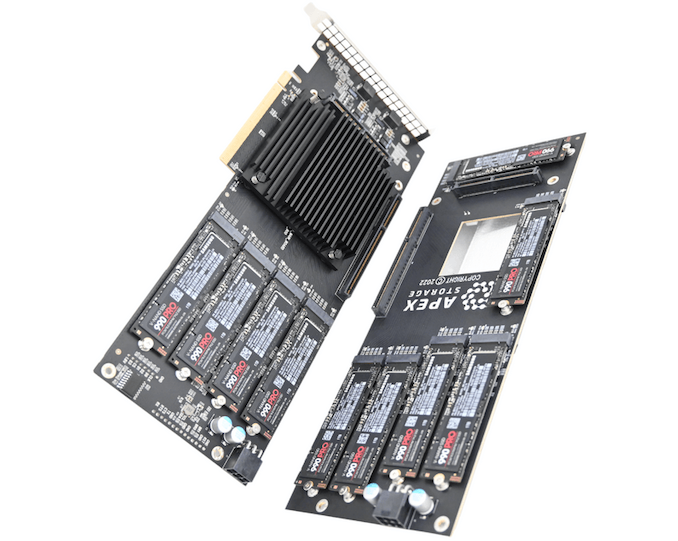
Of course, 21 M.2 SSDs consume a lot of power, so the card comes with two six-pin auxiliary PCIe power connectors that can deliver up to 150W to the card. It is unclear how much power the X21 AIC can suck from the PCIe slot as well, but in theory the combination of the two connectors and the slot can provide up to 225W to the drives, or a bit over 10 Watts per drive. The cramped card doesn't offer much in the way of cooling, however, so Apex Storage recommends using external fans that provide airflow of at least 400 LFM – essentially requiring a server-style blower configuration.
Apex Storage's X21 adapters can work in multi-card configurations provided that their host has enough PCIe Gen4 lanes. With a multi-card storage subsystem we are looking at up to 107 GB/s sequential read performance as well as 70 GB/s sequential write performance, which is comparable to throughput offered by all-flash-arrays that are typically considerably bigger.
Apex Storage did not touch upon availability timeframe as well as pricing of its X21 card.
More...
-
03-16-23, 12:49 AM #11657
Anandtech: Samsung Seeks to Make South Korea No. 1 Chipmaker with $230B Investment Ov
Samsung on Wednesday unveiled their plan to invest $230 billion over the next 20 years in a new semiconductor production mega cluster in South Korea. The country's government believes that the new chip manufacturing site and the expansion of existing fabs will make South Korea the world's largest producer of chips, de-throning Taiwan.
"The mega cluster will be the key base of our semiconductor ecosystem," a statement by the South Korean government published by Nikkei reads. [The mega cluster will enable South Korea to] leap forward as a leading country amid fierce global competition over advanced industries."
Samsung's new campus will be located near Yongin, Gyeonggi Province, and will house five advanced fabs. Some of the fabs will be used to produce logic chips for Samsung Foundry's customers, and others will focus on making various types of memory. Samsung plans to invest some $230 billion in its new site in exchange for tax breaks, subsidies, and other incentives from the government.
$230 billion is a huge pile of money, but it will be spent over a period of 20 years (i.e., $11.5 billion per year if spread equally) and on giant fabs that will use leading-edge fabrication technologies. These production facilities are set to adopt extreme ultraviolet (EUV) lithography scanners, which are extremely expensive. A current-generation ASML Twinscan NXE scanner with a 0.33 numerical aperture (NA) optics costs around $200 million, whereas a next-generation Twinscan EXE scanner with a 0.55 NA optics (High-NA) is expected to cost about $400 million. Every fab requires several cutting-edge scanners and thousands of other expensive tools to produce chips on leading-edge process technologies, so fabs are getting more costly and will be getting even more expensive in the coming years, so huge investment plans are set to become more common.
In addition to logic and memory chip production facilities, the new mega cluster will also house Samsung's semiconductor ecosystem partners, including suppliers of raw materials, parts, and even fabless chip designers, a total of 150 companies, reports Yonhap. Ecosystem partners tend to locate their facilities near large fab complexes to simplify logistics, but finding fabless chip developers in the fab campuses is something new. This might make a lot of sense since close collaboration between chip designers and chip producers at all stages may ensure higher performance and faster time-to-yield.
"The mega cluster will have the whole semiconductor value chain," the ministry said in a release. "The government will implement measures to become a global leader in the system semiconductor industry without a hitch in close cooperation with companies."
Interestingly, the South Korean government plans to nurture ten fabless firms with annual sales of over 1 trillion won ($761.4 million) by extending support for their prototype production, the Yonhap report reads, citing government officials.
Samsung's $230 billion investment is a pivotal part of South Korea's plans to attract some $422 billion of private investments into such sectors as batteries, biotechnology, displays, electric vehicles, robots, and semiconductors over the next few decades.
"The economic war that began recently in semiconductors is broadening to advanced industries such as batteries and cars of the future," said Yoon Suk Yeol, president of South Korea, in a TV interview, reports Bloomberg. "Each country is sparing nothing in large-scale subsidies and tax benefits to build cutting-edge manufacturing facilities at home."
Indeed, China, Japan, the European Union, Taiwan, and the U.S. are all trying to advance emerging technologies and industries like AI, autonomous vehicles, high-performance computing, robotics, and renewable energy sources. Computer chips are crucial for all emerging technologies and industries, so Samsung's new mega cluster fab complex is vital for the company and the country.
More...
-
03-16-23, 11:27 AM #11658
Anandtech: Inflation Rises Fab Costs for Intel and Samsung by Billions of Dollars
To address future demand for semiconductors amid severe chip shortages of 2020 – 2022, all leading chipmakers announced plans to build new fabs and even disclosed their estimated costs. But spiraled inflation, caused by the disruption of supply chains by the pandemic and then by the Russian war against Ukraine, increased costs of fabs for Intel and Samsung by billions of dollars, according to reports.
When Intel announced plans to establish a new manufacturing site near Magdeburg, Germany, last year, it said that its first production fab and supporting facilities would require investments of $18.7 billion (€17 billion) and negotiated $7.2 billion of state aid. But because of high inflation, increasing costs of materials, and high energy prices, the company now believes that the initial investment would be around $31.675 billion (€30 billion). According to a Bloomberg report last week, it would need $4.223 billion – $5.279 billion (€4 billion – €5 billion) more state support.
Intel confirmed that it was re-negotiating the support package with the German authorities because of increased fab costs, but they did not confirm the exact sums it sought.
"Disruptions in the global economy have resulted in increased costs, from construction materials to energy," a statement by Intel reads. "We appreciate the constructive dialogue with the federal government to address the cost gap with building in other locations and make this project globally competitive."
When completed later this decade, Intel's fab in Germany will be one of the most advanced semiconductor facilities in the world. Given the timeframe for starting production, it will likely use sub 1.8nm (post Intel 18A) fabrication processes to make chips for Intel and its customers of its Intel Foundry Service division.
Intel is not the only company to suffer from higher-than-expected fab costs. As it turns out, Samsung estimates that its initial investments in its upcoming fab near Taylor, Texas, will total over $25 billion, up more than $8 billion from initial forecasts, according to a Reuters report that cites three people with knowledge of the matter.
While wafer fab equipment accounts for the lion's share of fab costs and these tools are gradually getting more expensive, construction cost was the main reason the Taylor, Texas, fab got more expensive. Meanwhile, Samsung wants to build the fab sooner rather than later since it expects further cost increases.
"The higher construction cost is about 80% of the cost increase," one of Reuters's sources is reported to have said. "The materials have gotten more expensive," the source added.
Samsung is looking forward to completing the construction of its fab in Taylor, Texas, in late 2023 or early 2024. After it moves into the production tools, it will start making chips at the production facility in 2024 – 2025, presumably using its 3nm and 4nm-class process technologies.
More...
-
03-16-23, 11:27 AM #11659
Anandtech: NVIDIA Bundles Redfall Bite Back Edition With GeForce RTX 40 Series GPUs
NVIDIA has launched a new RTX game bundle for the chipmaker's latest generation GeForce RTX 40 series (Ada Lovelace) video cards. For their latest promotional offer, the company has teamed up with Arkane Austin, the game developer behind Prey, Dishonored, and Deathloop, to offer a free digital copy of the upcoming Redfall game with select GeForce RTX 40 series desktop and mobile graphics card purchases. Redfall is a forthcoming open-world, co-op first-person shooter based on Unreal Engine 4 that will launch on May 2nd for the PC and Xbox Series X|S. The plot takes players to Redfall, a fictional island town located in Massachusetts, where they have to fight off a legion of blood-thirsty vampires.
The eligible GeForce RTX 40 series SKUs include the entirety of NVIDIA's current GeForce desktop video card lineup (GeForce RTX 4090, GeForce RTX 4080, and GeForce RTX 4070 Ti), whether purchased individually or as part of a pre-built gaming PC. On the mobile end, only laptops powered by the GeForce RTX 4090 Laptop GPU and GeForce RTX 4080 Laptop GPU are qualified for the new bundle. Notably, the more recently launched GeForce RTX 4070, GeForce RTX 4060, and GeForce RTX 4050 Laptop GPUs are excluded.
This is the first game bundle that NVIDIA has offered for any of the GeForce RTX 40 series cards since this generation of products first launched last fall. NVIDIA had previously been offering bundles with RTX 30 cards to help move remaining stocks, so it's notable here that the bundle only applies to the RTX 40 series – indicating that NVIDIA has either sufficiently depleted RTX 30 series stocks, or those are otherwise selling at a reasonable pace at current prices. Bundles are typically offered by both vendors to help add value to products that are otherwise slowly moving, so this may be a sign that RTX 40 series sales have finally cooled a bit.NVIDIA Current Game Bundles
(March 2023)Video Card
(incl. systems and OEMs)Game GeForce RTX 40 Series Desktop (All) Redfall (Bite Back Edition) GeForce RTX 30 Series Desktop (All) None GeForce RTX 4090 Laptop
GeForce RTX 4080 LaptopRedfall (Bite Back Edition) GeForce RTX 40 Series Laptos (Other) None GeForce RTX 30 Series Laptop (All) None
Atypically for video card game bundles, NVIDIA isn't just offering the base edition of Redfall with the game, but rather a Steam copy of the premium Bite Back Edition. The Redfall Bite Back Edition sells for $99 and contains additional goodies, such as:
- A Steam PC digital copy of Redfall
- Redfall Hero Pass with two future heroes
- Laser Beam Multi-Weapon Skin
- Tactical Knife Stake Weapon Attachment
- Northern Expedition Devinder Outfit
- Eyes in the Dark Jacob Outfit
- War Clothes Layla Outfit
- Engineer Volunteer Remi Outfit
Redfall leverages several NVIDIA technologies, including DLSS (Deep Learning Super Sampling) 3 and Reflex. Ray tracing is also on the table but will arrive in a post-launch update. Redfall joins the ranks of another 28 games that embrace NVIDIA's DLSS 3 technology, which employs artificial intelligence (AI) to improve gaming performance on GeForce RTX 40 series graphics cards.
Arkane Austin hasn't revealed the complete system requirements for Redfall. However, the game listings on Steam and Epic Games recommend a hexa-core Intel or AMD processor, 16GB of memory, and a graphics card equivalent to a GeForce GTX 1070 or a Radeon RX 580 as the minimum recommended configuration. As such, even the GeForce RTX 4070 Ti, one of the qualifying SKUs for the Redfall Bite Back Edition game bundle, should have no problems running Redfall fluidly.
As always, codes must be redeemed via the GeForce Experience application on a system with a qualifying graphics card installed. The Redfall bundle kicks off today, and more information and details can be found in the terms and conditions. Be sure to verify the participation of any vendors purchased from, as NVIDIA will not give codes for purchases made from non-participating sellers.
More...
-
03-17-23, 05:58 AM #11660
Anandtech: Qualcomm Announces Snapdragon 7+ Gen 2: Premium Segment SoC Gets a Cortex-
After a 2021/2022 product cycle that was a bit more interesting than Qualcomm perhaps would have liked, 2023 has been a far more straightforward year for the prolific SoC and cellular modem vendor. After releasing the first of their Gen 2 family of parts earlier this year with the flagship-class Snapdragon 8 Gen 2, the company is preparing to iterate through the next step of its product stack with the Snapdragon 7+ Gen 2. Aimed at what’s become Qualcomm’s traditional “premium” market segment, which focuses on flagship-level features with more modest performance and costs, for the Snapdragon 7+ Gen 2, Qualcomm is aiming to deliver a sizable performance boost to the platform.
More...
Thread Information
Users Browsing this Thread
There are currently 13 users browsing this thread. (0 members and 13 guests)





 Quote
Quote
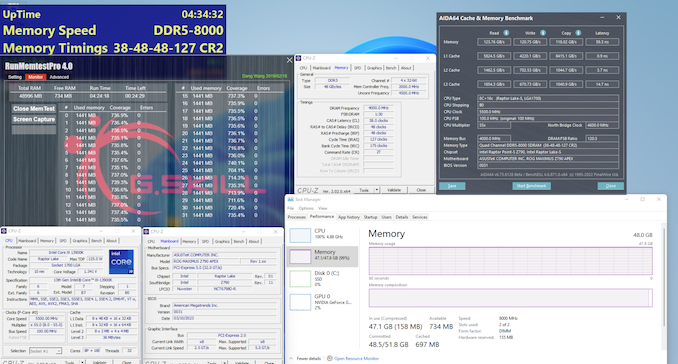

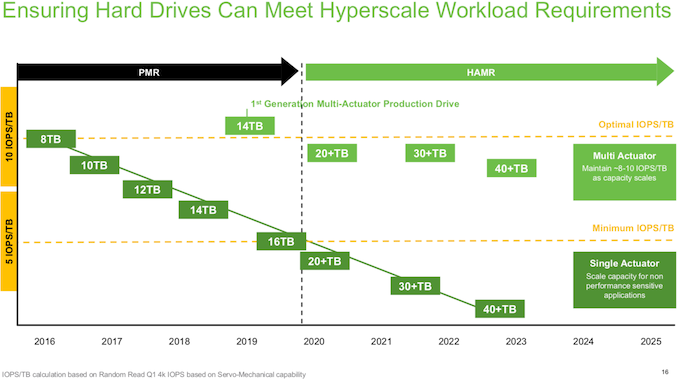
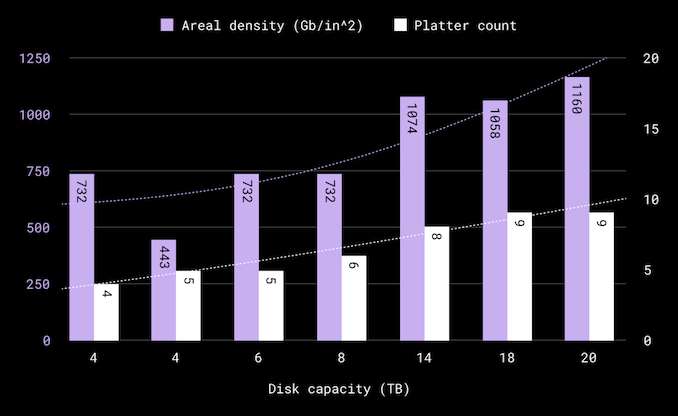
_575px.jpg)
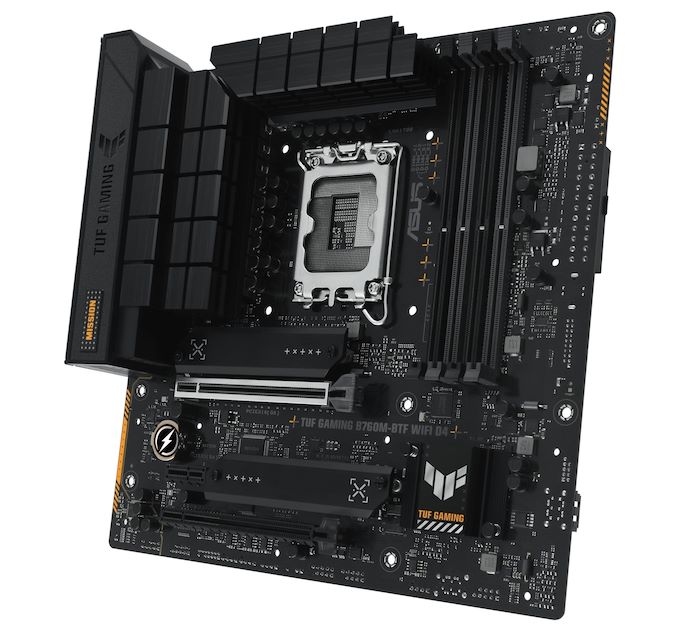
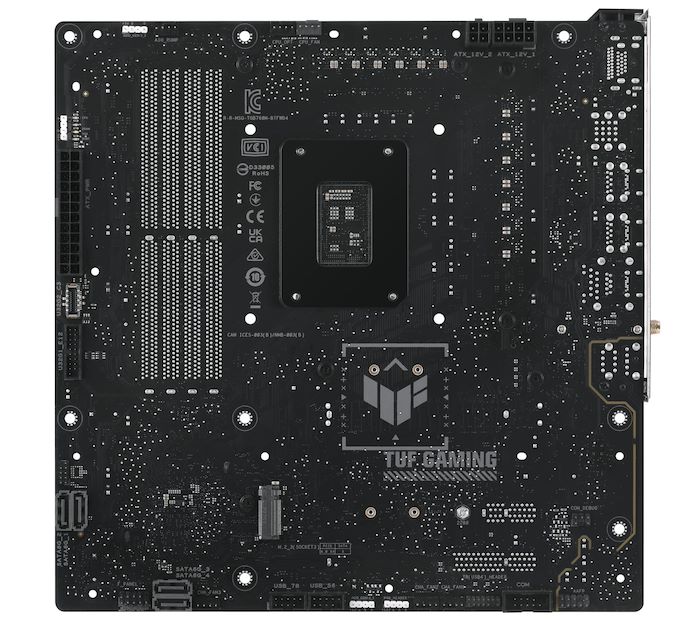
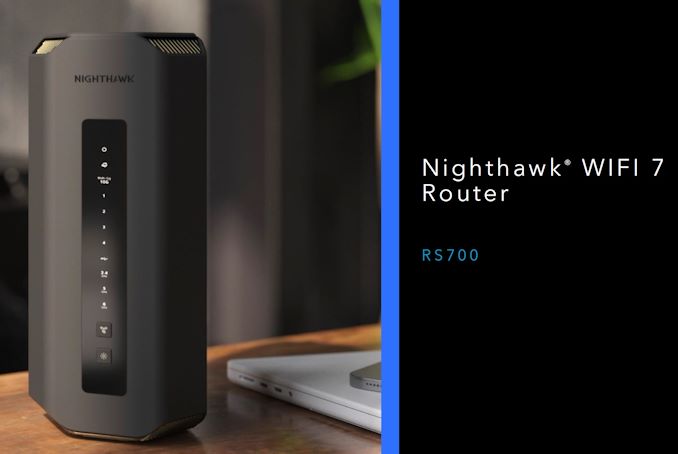
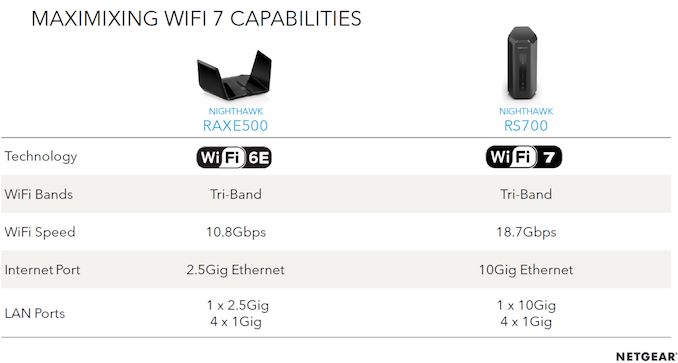
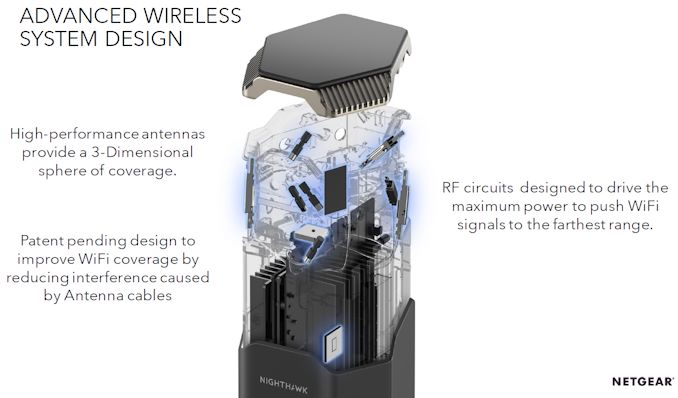
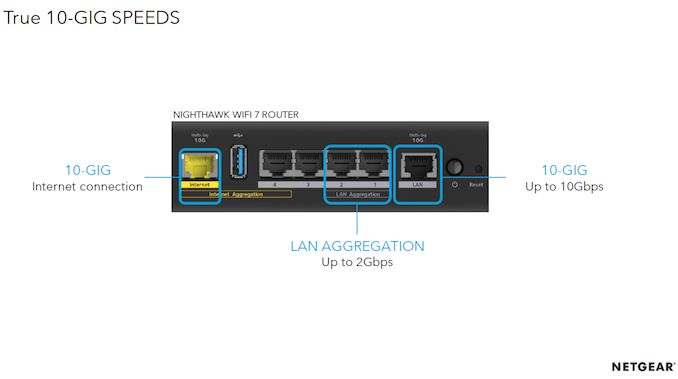
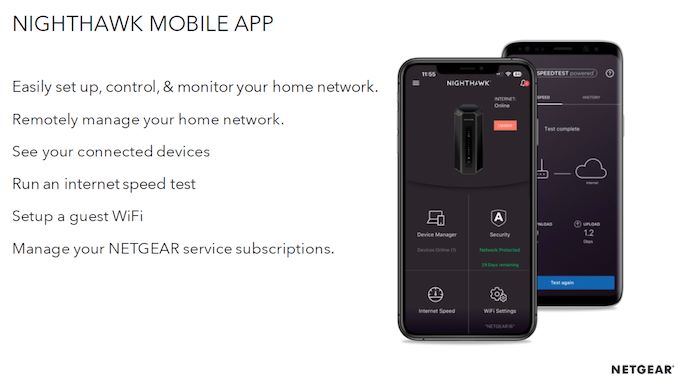
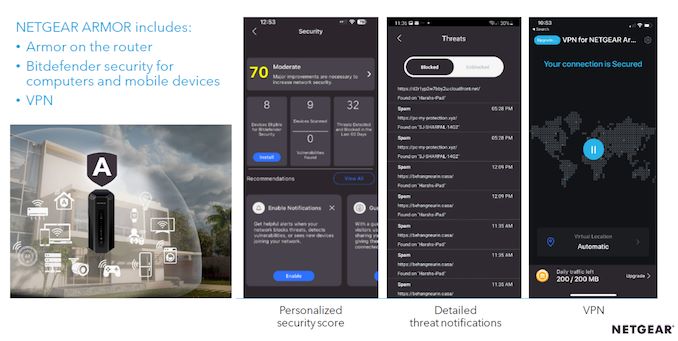
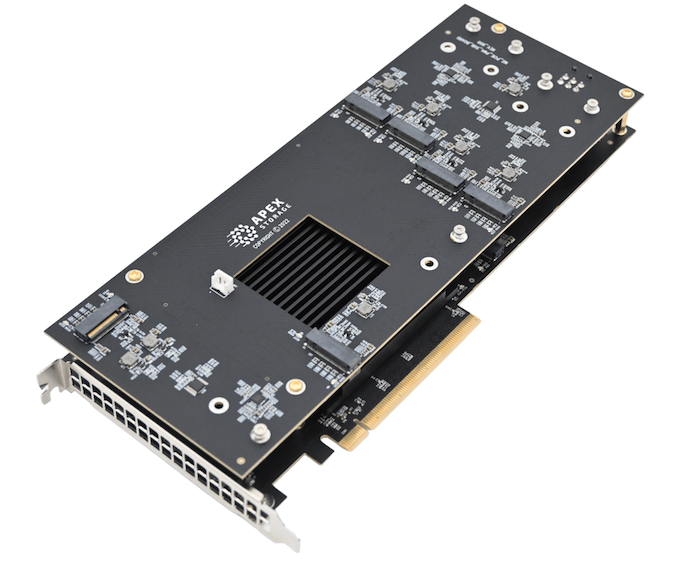
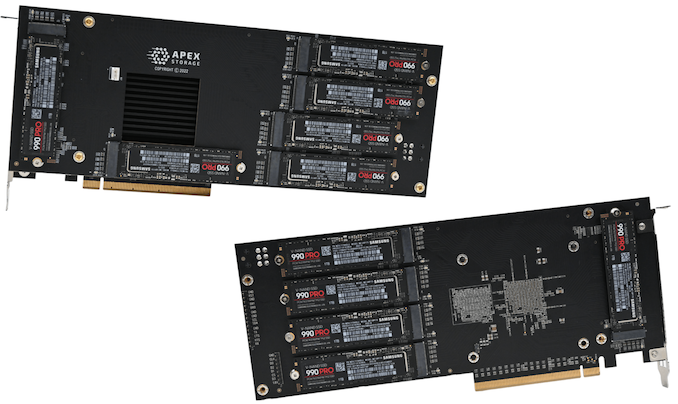
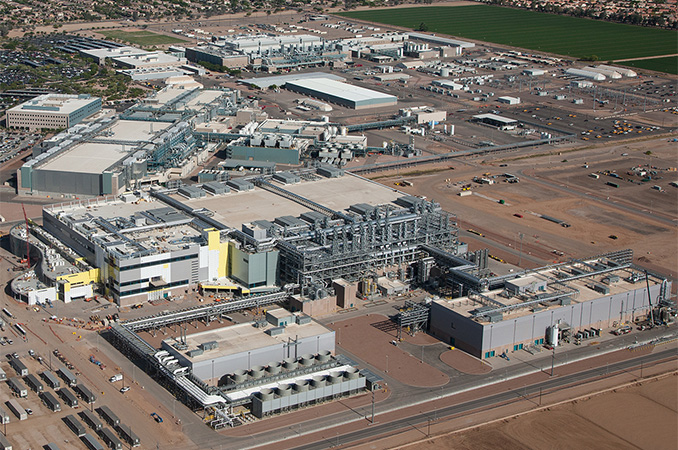
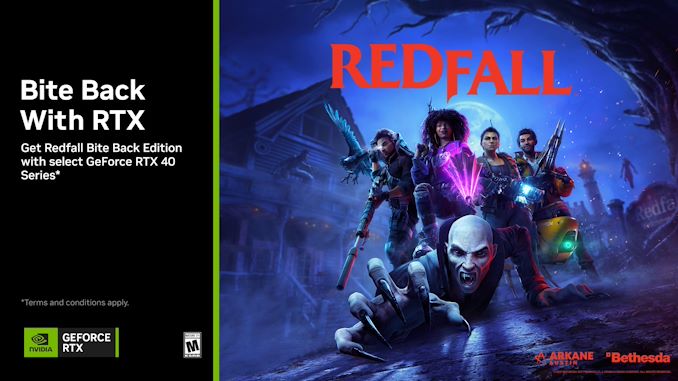
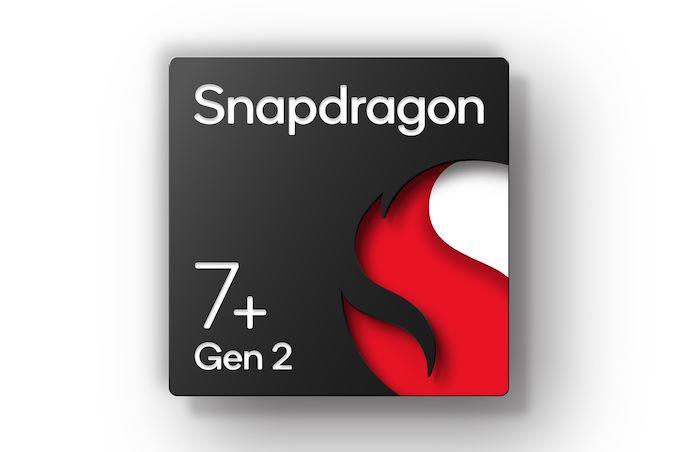
















Bookmarks